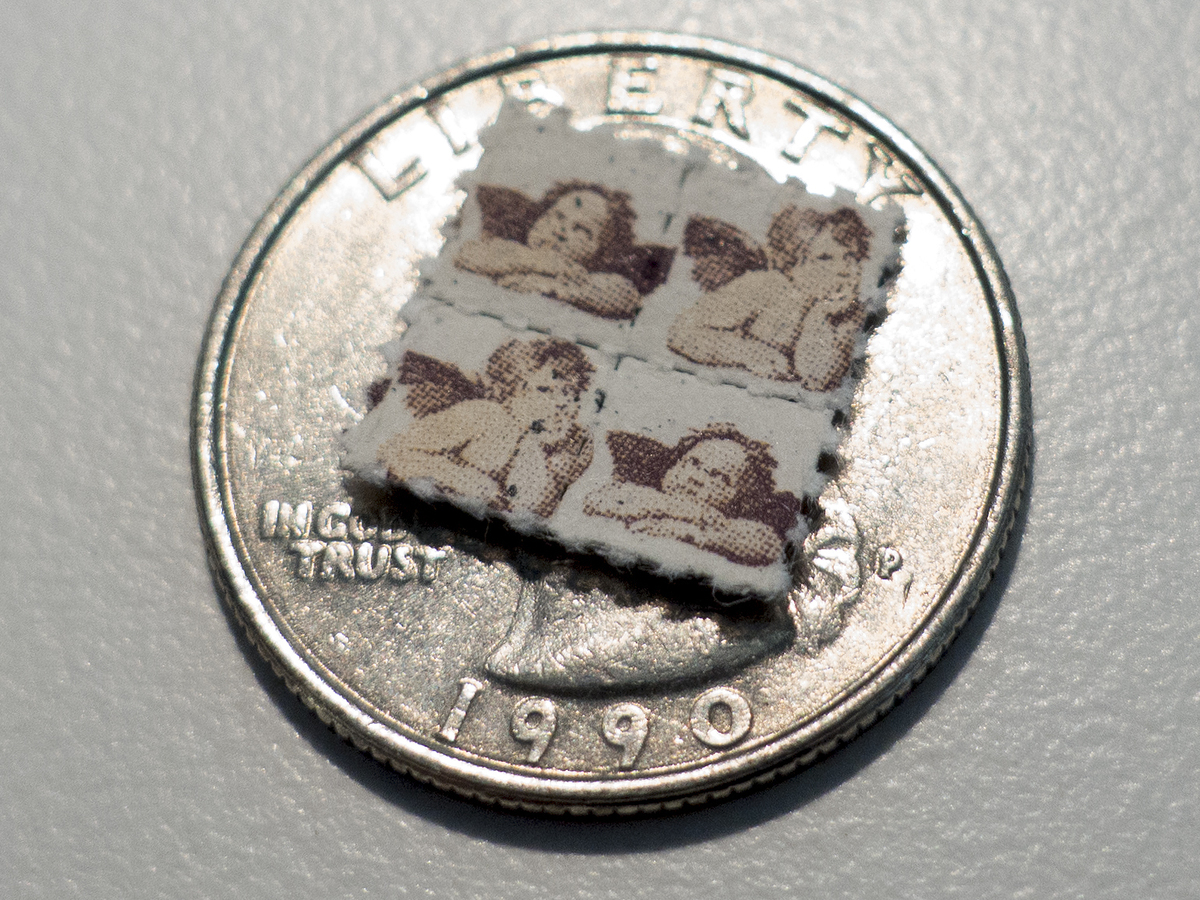[ad_1]

LSD blotter tabs sit on top of a US quarter coin. A drug based off of psychedelic LSD appears to relieve depression and anxiety in mice, but without the hallucinogenic side effects.
PAUL J. RICHARDS/AFP via Getty Images
hide caption
toggle caption
PAUL J. RICHARDS/AFP via Getty Images

LSD blotter tabs sit on top of a US quarter coin. A drug based off of psychedelic LSD appears to relieve depression and anxiety in mice, but without the hallucinogenic side effects.
PAUL J. RICHARDS/AFP via Getty Images
Drugs like magic mushrooms and LSD can act as powerful and long-lasting antidepressants. But they also tend to produce mind-bending side-effects that limit their use.
Now, scientists report in the journal Nature that they have created drugs based on LSD that seem to relieve anxiety and depression – in mice – without inducing the usual hallucinations.
“We found our compounds had essentially the same antidepressant activity as psychedelic drugs,” says Dr. Bryan Roth, an author of the study and a professor of pharmacology at UNC Chapel Hill School of Medicine. But, he says, “they had no psychedelic drug-like actions at all.”
The discovery could eventually lead to medications for depression and anxiety that work better, work faster, have fewer side effects, and last longer.
The success is just the latest involving tripless versions of psychedelic drugs. One previous effort created a hallucination-free variant of ibogaine, which is made from the root bark of a shrubby plant native to Central Africa known as the iboga tree.
“It’s very encouraging to see multiple groups approach this problem in different ways and come up with very similar solutions,” says David E. Olson, a chemical neuroscientist at the University of California, Davis, who led the ibogaine project.
An unexpected find
The new drug comes from a large team of scientists who did not start out looking for an antidepressant.
They had been building a virtual library of 75 million molecules that include an unusual structure found in a number of drugs, including the psychedelics psilocybin and LSD, a migraine drug (ergotamine), and cancer drugs including vincristine.
The team decided to focus on molecules that affect the brain’s serotonin system, which is involved in regulating a person’s mood. But they still weren’t looking for an antidepressant.
Roth recalls that during one meeting, someone asked, “What are we looking for here anyway? And I said, well, if nothing else, we’ll have the world’s greatest psychedelic drugs.”
As their work progressed, though, the team realized that other researchers were showing that the psychedelic drug psilocybin could relieve depression in people. And the effects could last a year or more, perhaps because the drug was helping the brain rewire in a way that was less prone to depression.
“There [were] really interesting reports about people getting great results out of this after just a few doses,” says Brian Shoichet, an author of the study and a professor in the pharmaceutical chemistry department at the University of California, San Francisco.
So the team began refining their search to find molecules in their library that might act the same way.
Ultimately, they selected two.
“They had the best properties,” Shoichet says. “They were the most potent, and when you gave them to a mouse, they got into the brain at the highest concentrations.”
The two molecules were also “extremely effective” at relieving symptoms of depression in mice, Roth says.
How to tell when a mouse is tripping
Scientists have shown that a depressed mouse tends to give up quickly when placed in an uncomfortable situation, like being dangled from its tail. But the same mouse will keep struggling if it gets an antidepressant drug like Prozac, ketamine, or psilocybin.
Mice also kept struggling when they got the experimental molecules.
But they didn’t exhibit any signs of a psychedelic experience, which typically causes a mouse to twitch its nose in a distinctive way. “We were surprised to see that,” Roth says.
The team says it needs to refine these new molecules before they can be tried in people. One reason is that they appear to mimic LSD’s ability to increase heart rate and raise blood pressure.
But if the approach works, it could overcome a major obstacle to using psychedelic drugs to treat depression.
Currently, treatment with a psychedelic requires medical supervision and a therapist to guide a patient through their hallucinatory experience.
That’s an impractical way to treat millions of people with depression, Shoichet says.
“Society would like a molecule that you can get prescribed and just take and you don’t need a guided tour for your trip,” he says.
Another advantage of the new approach is that the antidepressant effects would occur within hours of taking the drug, and might last a year or more. Drugs like Prozac and Zoloft often take weeks to work, and must be taken every day.
Drugs based on psychedelics “take us a step closer to a cure, rather than simply treating disease symptoms,” Olsen says.
[ad_2]
Source link

Comments are closed.